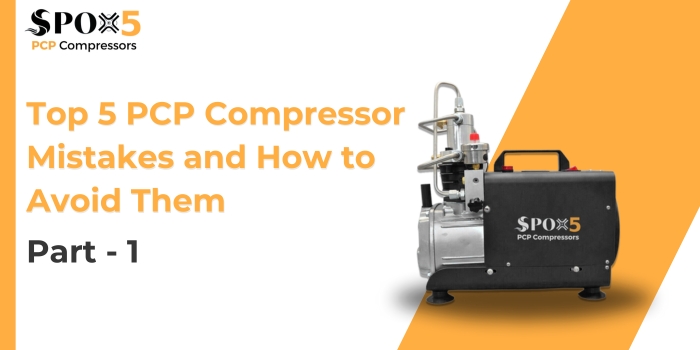PCP (progressing cavity) compressors are the workhorses of the compressed air world, powering everything from air rifles to industrial applications. But like any powerful tool, they require proper handling to ensure safety, efficiency, and longevity. Here, we explore the top 5 common mistakes with PCP compressors and provide solutions to keep your air source running smoothly.
Mistake #1: Ignoring the Manual
The Problem: Every PCP compressor model has its own specific capabilities and limitations outlined in the user manual. Ignoring these guidelines can lead to a world of trouble.
The Consequences: Skipping the manual can result in:
- Reduced Efficiency: Operating outside the recommended pressure range or using the wrong settings can strain the compressor and decrease its overall efficiency.
- Premature Wear and Tear: Pushing the compressor beyond its limits can accelerate wear on internal components, shortening its lifespan.
- Safety Hazards: Operating with improper procedures or exceeding pressure limits can increase the risk of accidents and injuries.
The Solution: Make the user manual your best friend. Familiarize yourself with:
- Recommended Pressure Range: Each model has a specific pressure range it’s designed to handle. Always operate within these limits.
- Compatible Fluids: The manual will specify the types of fluids the compressor can handle safely. Using incompatible fluids can damage internal components.
- Maintenance Schedule: The manufacturer recommends a specific maintenance schedule for oil changes, filter replacements, and inspections. Regular maintenance ensures optimal performance and longevity.
Mistake #2: Neglecting System Design
Problemet: Hvis man kun fokuserer på selve kompressoren og glemmer hele systemdesignet, kan det føre til problemer med ydeevnen.
The Consequences: A poorly designed system can put undue stress on your PCP compressor and hinder its ability to perform efficiently:
- Improper Pipe Sizing: Undersized pipes create excessive back pressure, reducing the compressor’s effective PSI output and potentially leading to overheating.
- Utilstrækkelig filtrering: Hvis man ikke bruger ordentlige filtre opstrøms for kompressoren, kan forurenende stoffer trænge ind i systemet og beskadige de indvendige komponenter.
- Ignorerer systemets modtryk: Hvis man ignorerer eller ikke håndterer modtryk fra nedstrømsudstyr, kan det reducere kompressorens kapacitet til at levere den ønskede flowhastighed.
Løsningen: Når man planlægger et PCP-kompressorsystem, skal man overveje alle aspekter af designet:
- Dimensionering af rør: Kontakt en kvalificeret ingeniør for at bestemme den passende rørdiameter baseret på den nødvendige flowhastighed og trykfald.
- Filtrering: Installer passende filtre ved kompressorens indgang for at fjerne eventuelle forurenende stoffer fra den indkommende luft eller gas.
- Håndtering af modtryk: Identificer potentielle kilder til modtryk nedstrøms, og implementer strategier for at minimere det, f.eks. ved at bruge rør med større diameter eller installere trykaflastningsventiler.
Stay tuned for Parts 2 & 3 of this blog series, where we’ll explore additional mistakes to avoid and delve into proper maintenance practices for your SPOX5 PCP compressor!

